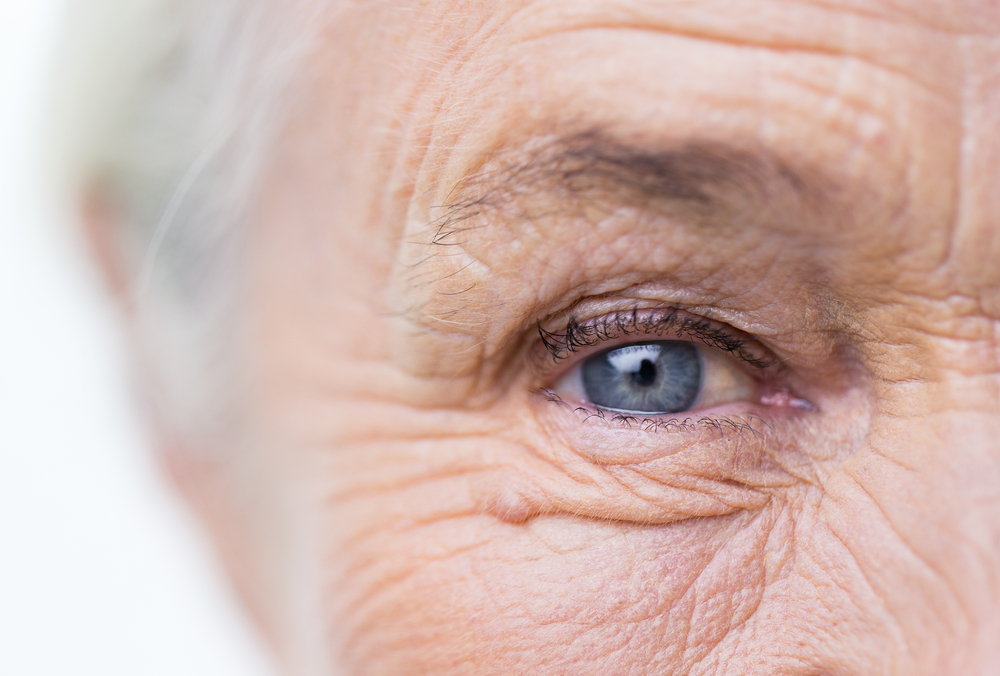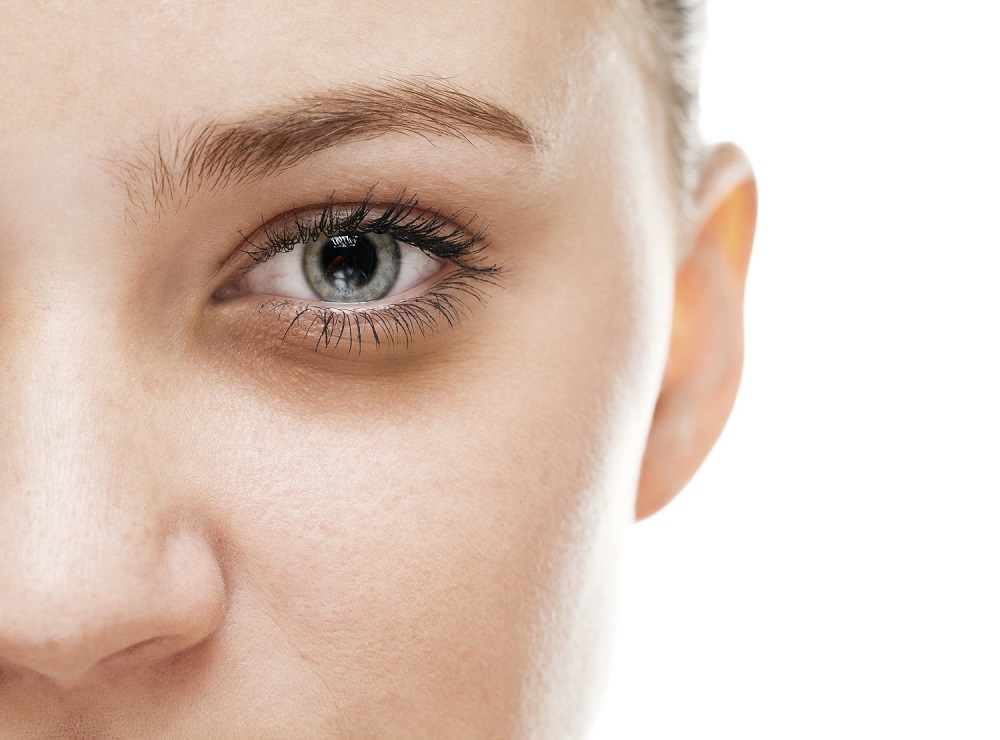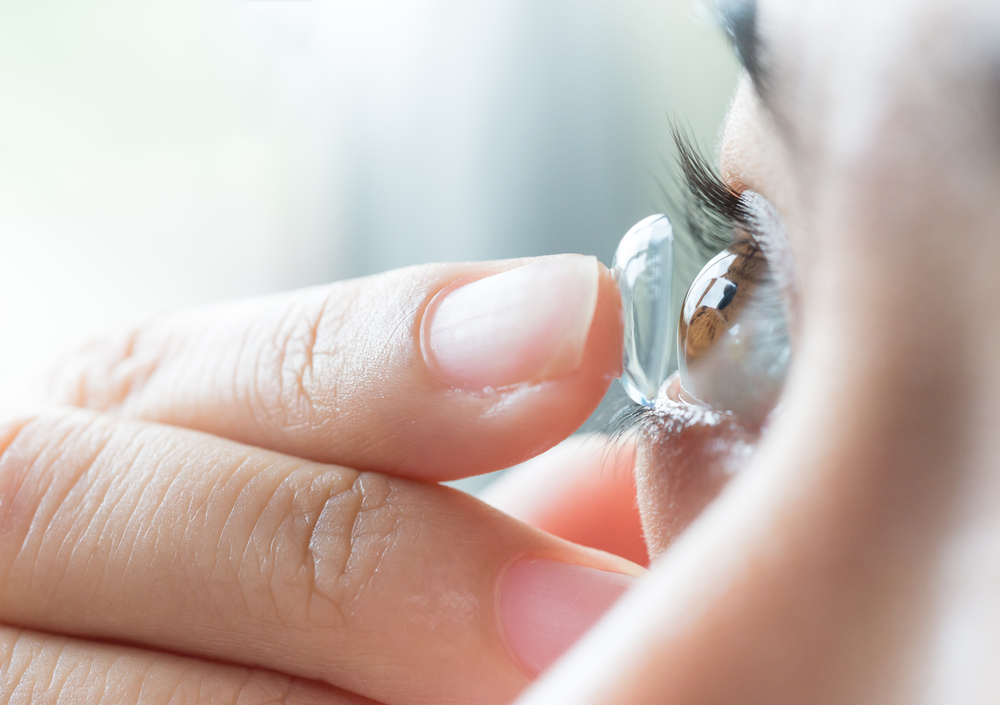“Contact lenses are medical products that are placed directly on the transparent layer of the eye called the cornea. They can be used for correcting refractive errors, preferably instead of glasses, or for cosmetic purposes such as changing eye color.
In addition to this, they are used as part of the treatment in some eye diseases such as keratoconus or in cases where the refractive errors between the two eyes are significantly different, especially in children.
Contact lenses can be classified based on the material they are made of:
- Soft lenses are made from a type of plastic called hydrogel, which is a gel-like material that can hold water. They are soft and flexible, making them easy to use. They quickly adapt to the eye, so they do not cause discomfort. They are thin enough to allow oxygen to pass through to the cornea.
- Silicone hydrogel lenses are an advanced type of soft contact lens. Compared to hydrogel lenses, they have a more porous structure and allow more oxygen to reach the cornea. They have been in use since 2002.
- Classic hard lenses are made of a hard and transparent plastic material called PMMA. These hard lenses do not allow oxygen to pass through and are no longer in use.
- Gas-permeable lenses can be considered as the new generation of hard lenses. These lenses are made by combining plastic with other materials such as silicone and fluoropolymers. They have a structure that allows oxygen to pass through. Since their introduction in 1978, they have replaced classic hard lenses. Due to their rigid structure, they provide clearer vision compared to soft lenses, but soft lenses are the most commonly preferred lenses today due to their ease of use and comfort.
- Hybrid lenses are designed with the idea of combining the optical clarity provided by gas-permeable hard lenses with the comfort of soft lenses. They have a high gas-permeable hard section at the center of the lens, surrounded by lens sections made of hydrogel or silicone hydrogel material.
Contact lens designs are named according to their purpose in correcting vision problems:
- Spherical contact lenses are typically round in design. They are used to correct myopia and hyperopia.
- Toric contact lenses are used to correct astigmatism and can also address hyperopia and myopia associated with astigmatism.
- Bifocal contact lenses contain separate optical zones for distance and near vision and are used to correct presbyopia.
Contact lenses have specific applications for cosmetic purposes. Colored lenses can be used to change eye color, and there are also colored prosthetic lenses used to cover aesthetic issues in traumatized eyes.
There are three fundamental parameters that determine the suitability of contact lenses for the eye:
- The base curve, which determines the curvature of the lens’s back surface that sits on the cornea. It is usually expressed in millimeters (e.g., 8.4 mm, 8.5 mm).
- The diameter of the lens, which represents the maximum length measured from one end of the contact lens to the other. Gas-permeable lenses typically have diameters in the range of 9.0 to 9.8 mm, while soft contact lenses have diameters ranging from 13.4 to 15.0 mm.
- The power of the lens, which indicates the optical refractive power of the lens and is expressed in diopters (D). It represents the degree of refractive error in the eye.
When selecting the right contact lens for an individual, measurements of corneal diameter and refractive values of the eye are determined by an eye specialist. It should be noted that the lens prescription often differs from one’s glasses prescription.
WHEN USING CONTACT LENSES
Contact lenses are medical products that are placed directly on the cornea of the eye. The use of contact lenses became widespread with the introduction of soft contact lenses made of hydrogel, a gel-like material containing water, in the 1970s. Today, the most commonly used contact lenses are silicone hydrogel lenses, which are an improved form of soft lenses. These lenses allow more oxygen to pass through to the cornea compared to hydrogel lenses.
The cornea is the transparent front layer of the eye, resembling a bulging watch glass. It serves as a window for incoming light rays, effectively bending the light to focus it on the retina at the back of the eye. It is the most powerful refracting medium in the eye, and its transparency is maintained by being avascular. It consists of 78% water and the remaining part is collagen tissue. It maintains its transparency and shape through intraocular pressure. Oxygen and nutrients are supplied to it through tears and the atmosphere since it lacks blood vessels. To ensure that the corneal layer receives sufficient oxygen and nutrients, it is important to remove contact lenses when going to bed.
Extreme care should be taken when using contact lenses that make direct contact with the corneal layer. It should be remembered that incorrect usage can lead to permanent visual impairment due to damage to the corneal layer. When starting to use contact lenses and throughout their use, it is essential to be under the supervision of an eye specialist.
Contact lenses, when used carefully and correctly, are effective and safe in correcting refractive errors such as myopia, hyperopia, and astigmatism. They are preferred over glasses by young people and young adults because of their comfort and ease of use, making them suitable for active and fast-paced daily life. Additionally, contact lenses can be used for cosmetic purposes to change eye color in individuals without vision problems or as part of the treatment in certain corneal diseases like keratoconus.
There is no specific age to start using contact lenses. In medical cases, doctors can prescribe contact lenses even for infants and small children. When starting to use contact lenses, the fundamental principle is to have contact lenses prescribed by an eye specialist that match the individual’s corneal diameter and eyeglass prescription. To ensure the safe use of contact lenses for many years, it is important to follow the usage instructions recommended by the doctor and to remain under their care.
Contact lenses are safe medical products used by most people. However, the belief that everyone can use contact lenses is a misconception. In some cases, contact lens use may not be suitable for individuals. People who frequently experience eye infections, those with severe eye allergies, individuals with dry eyes, people who work in dusty and dirty environments, and those who do not have the ability to properly care for contact lenses are not suitable candidates for contact lens use.
The most feared complication in contact lens users is corneal infections that can lead to temporary or permanent vision loss. Risk factors that increase the chances of corneal infections are often related to usage errors. Daily disposable lenses should never be reused once they are removed from the eye. Monthly lenses should be removed every night, as sleeping with lenses increases the risk of eye infections. Monthly lenses should be replaced without delay, without extending their usage period. It should be remembered that prolonged use of lenses can increase the risk of eye allergies, eye infections, and reduce the comfort of lens wear due to the accumulation of proteins on the lens.
How should I care for my contact lenses?
After removing contact lenses from the eye, they should be thoroughly cleaned and disinfected with multi-purpose contact lens solutions.
The lenses placed in the solution after removal should be left in the solution for at least 5-6 hours and should not be taken out immediately and reinserted into the eye.
Contact lenses should be cleaned every day, and the lens
case should be replaced every three months.
After inserting the lenses into the eye, the solution in the lens case should be emptied, and the lens case should be left open to air dry.
Contact lenses should never be cleaned with any cleaning solution other than contact lens solution.
Except for the eye drops recommended by your doctor, no other eye drops should be used while wearing contact lenses.
What should I be cautious about when using contact lenses?
Hands should be washed thoroughly before touching contact lenses, and hands should be free of creams, lotions, or cosmetic residues.
Make sure that the lens is undamaged and well-cleaned before inserting it into the eye.
Lenses are personal to the individual and should never be shared.
Even for cosmetic purposes, lenses should be prescribed by an eye specialist after measuring the corneal diameter.
Contact lenses should be used in accordance with the schedule recommended by your doctor, and wearing them for extended hours should be avoided, as well as sleeping with lenses, as it increases the risk of eye infections.
Contact lenses should be replaced with new ones at the time recommended by your doctor. The duration of lens use may vary from person to person.
When the following conditions occur while using contact lenses, the lenses should be immediately removed, and an eye specialist should be consulted without delay:
If there is any pain in the eye
If there is sensitivity to light in the eye
If redness in the eye persists for more than 2 days
If there is a sensation of discomfort in the eye
If blurred vision begins
If there is a feeling of foreign body in the eye
When used carefully and correctly, contact lenses are medical products that can correct refractive errors and improve the quality of life. To be able to use contact lenses safely for many years, remember to follow the usage instructions recommended by your eye specialist.”










